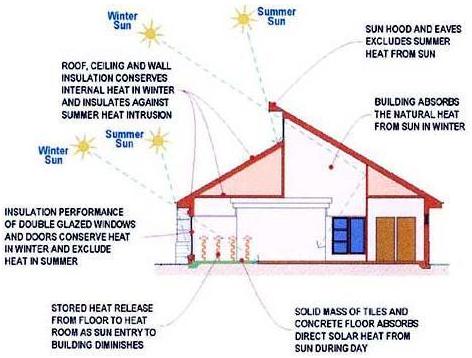At this time of year, it’s easy to see why a property’s orientation matters. The sun sits lowest in the sky around 21 June and shadows cast by the sun are at their longest.
Whether the property you’re considering is a home, investment or business premises, choosing one with the right orientation increases its energy efficiency, making it more comfortable and cost-effective to run.
Good orientation reduces the need for auxiliary heating and cooling by letting the winter sun in and keeping the summer sun out.
The perfect orientation for Sydney’s climate
The ideal orientation for living areas is 15°W-20°E of ‘solar north’ (or true north). This allows standard eave overhangs to admit winter sun to heat the building and exclude summer sun with no effort from occupants.
Permanent solar access (with minimal potential overshadowing by neighbouring properties) is more likely on a north-south block. In summer neighbouring properties can provide protection from low east and west sun.
Tips for better orientation
Look for living spaces with good access to winter sun. North-facing living areas, balconies or outdoor living spaces are ideal.
- Locate laundries, bathrooms, garages and sheds to the south, west and east to protect living areas from summer sun and winter winds.
- As a general rule, the window area on the northern side of the property should be 10-25% of the floor area of the room.
- Maximize the distance between the house and any building development to the north to prevent shadows.
- Sites running east-west should be wide enough to accommodate north-facing outdoor space.
- If views are to the south avoid large panes of glass to minimise winter heat loss. West or east-facing glass will cause overheating in summer if not properly shaded.
- If the block is narrow, ensure sufficient north-facing glass is present for adequate passive solar heating.
- When renovating, the cheapest and easiest way to re-orient a property may be to swap room usage from one side of the house to another.
- Build on the south boundary to increase the amount of north-facing living space.


Comments